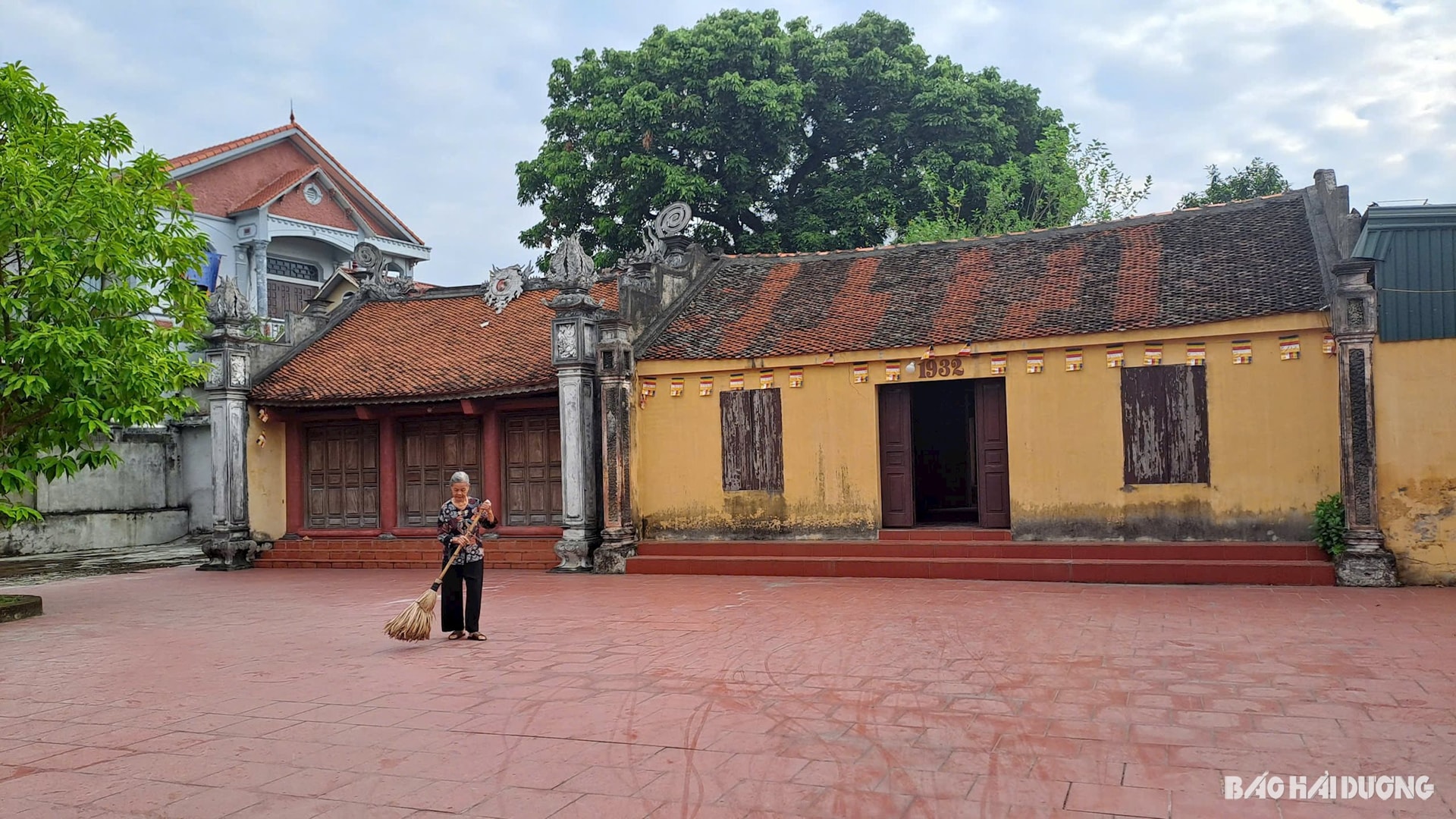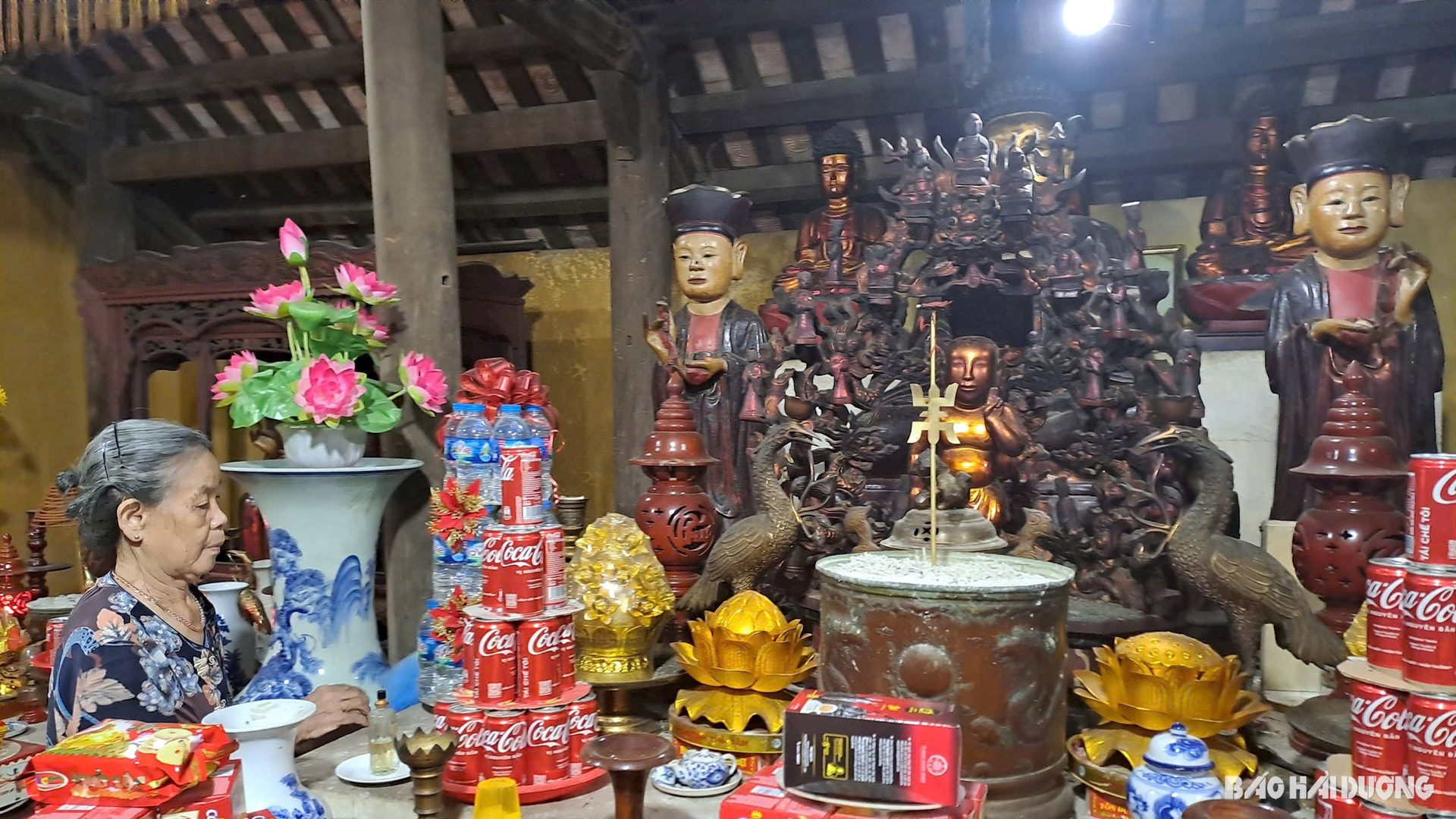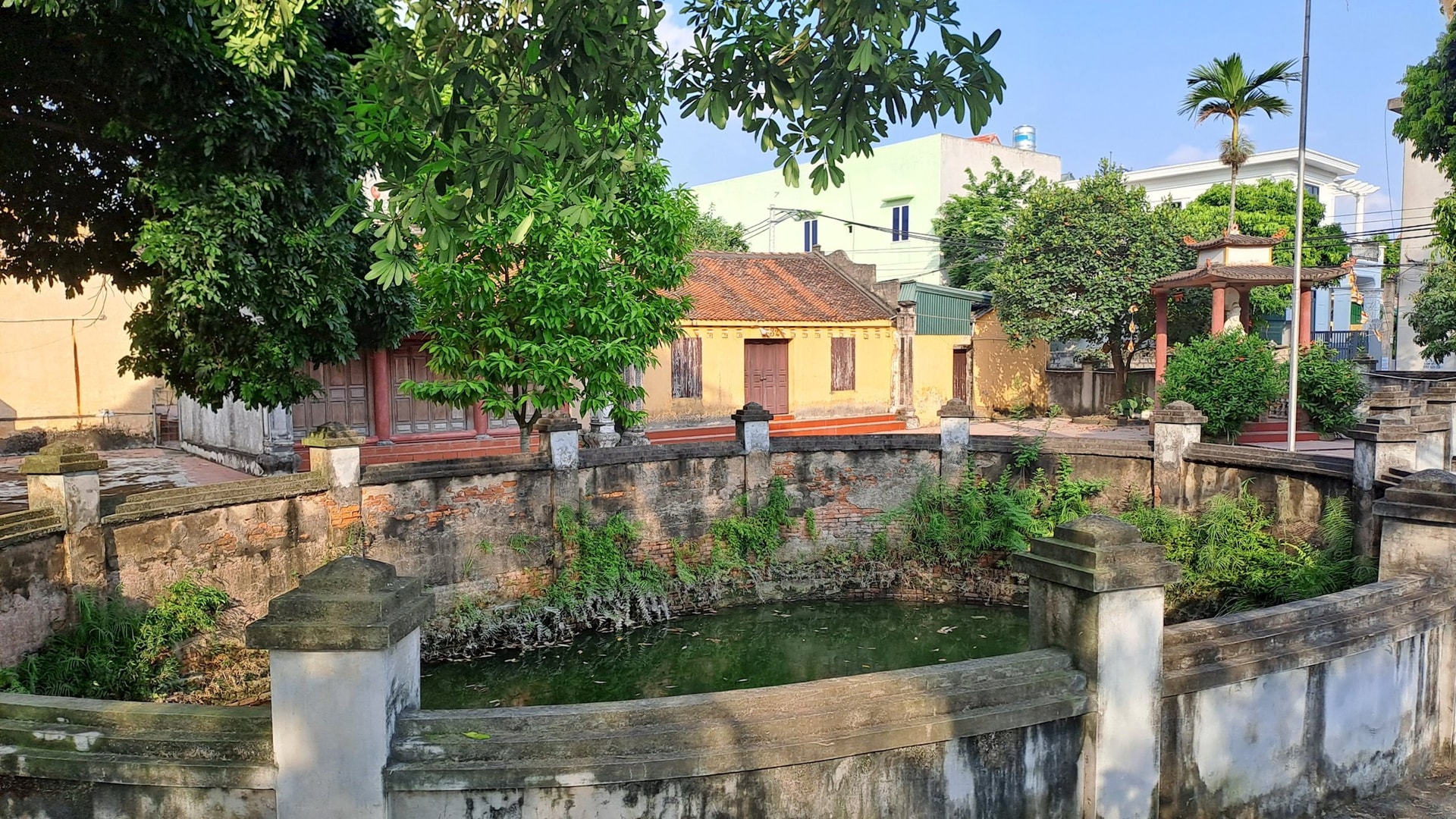Not only a place to worship Buddha, Kim Quan Pagoda in Cam Giang town (Cam Giang, Hai Duong) was once a resistance base during the anti-French colonial period.

Historical evidence
Kim Quan Pagoda is located in the center of Kim Quan area, Cam Giang town (formerly Kim Quan village, Kim Giang commune) of Cam Giang. Right in front of the pagoda, across a large pond, is Kim Quan communal house. During the resistance war against French colonialism, Kim Quan and neighboring areas were fiercely attacked by the French, who built bunkers, swept through, arrested and tortured people suspected of being Viet Minh.
Since 1951, the communal house has been a place to record the crimes committed by the French colonialists against our revolutionary soldiers. They used the communal house as a place to detain and torture revolutionary soldiers. During the period from 1951 to 1954, about 200 people were suspected and imprisoned here.
According to the relic records still preserved in the locality, at this time the pagoda had monk Bieu as its abbot. Every night, monk Bieu and a number of resistance cadres and villagers often secretly gathered at the pagoda to discuss plans to break into the communal house area, rescue many people and take them to the pagoda to hide, then bring these people out to continue their revolutionary activities. Monk Bieu also often helped the resistance cadres, closely monitored enemy activities and secretly reported to the resistance army. Later, monk Bieu also joined the resistance, standing up to fight the enemy.

Value retention
Through the ups and downs of time and war, although its scale is no longer as before, Kim Quan Pagoda still retains its ancient, simple and peaceful features.
Kim Quan Pagoda, also known as “Bat Duong Tu”, was built to worship Buddha and serve the people’s freedom of belief. The pagoda was built during the Le Dynasty and was completely restored in 1932 according to the Nguyen Dynasty architecture. Previously, the pagoda was very large, with a large gate, bronze pillars, and ancestral house, but was destroyed by war. The pagoda’s architecture currently consists of two structures, the front hall and the upper hall. The pagoda is built in the shape of the Chinese character Nhi. The architecture is in the shape of a four-pillar boat. On the right side of the pagoda yard, there is a 10-meter-wide well built in 1933, with a layer of broken stone mortars at the bottom of the well. Previously, the well water was clear all year round.
The pagoda still preserves 7 ancient statues of the Nguyen Dynasty, gilded with gold, a bronze bell cast in the year Thieu Tri 1843, and a number of Nguyen Dynasty ceramic incense bowls. The pagoda also has 2 sets of altars of the Nguyen Dynasty, including one in the style of a kneeling altar, the edges of the altar are carved with two dragons facing the moon, two dragons facing a scroll, two dragons facing the word longevity, and chrysanthemums in the style of a net door...

With the above historical and artistic values, the Kim Quan pagoda and communal house relic site was ranked at the national level in 1992. The relic site has truly become a place for community cultural activities, conveying the spirituality of the people, contributing to improving the cultural and spiritual life of the people; a place to mark the history of resistance and educate the revolutionary tradition for the younger generation.
In 2018, local people donated to repair some small items and re-tile the temple roof. However, the roof has now deteriorated, some columns are infested with termites and need to be invested in and repaired soon.
PHAN TUAN